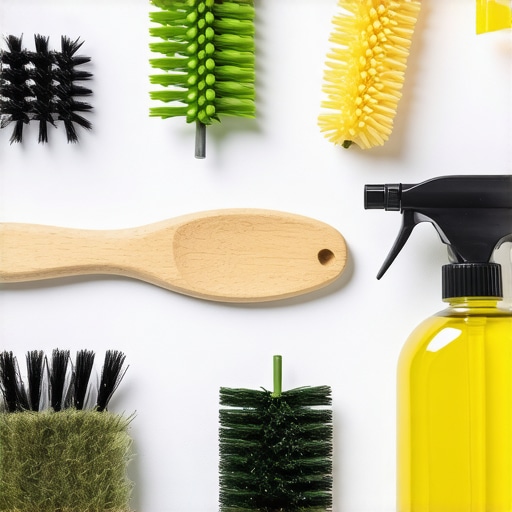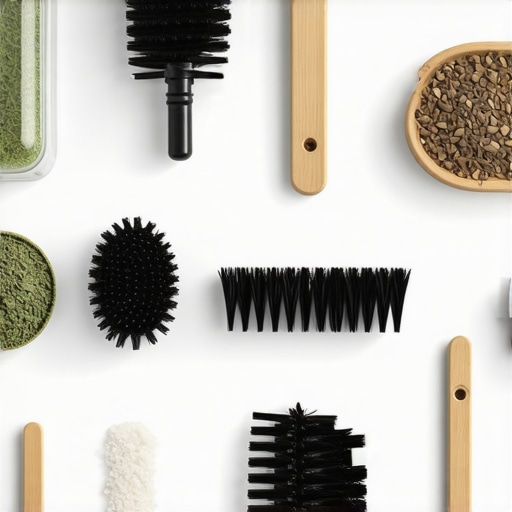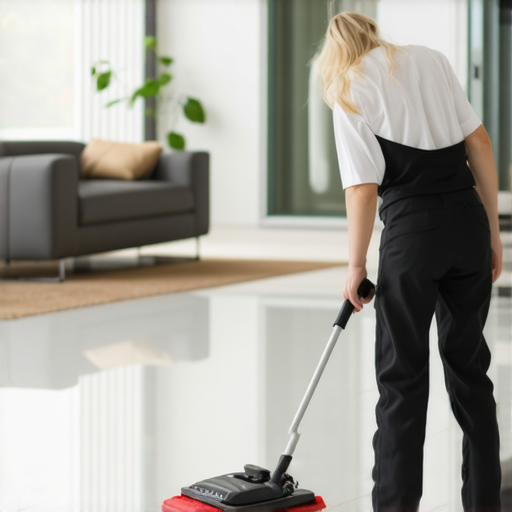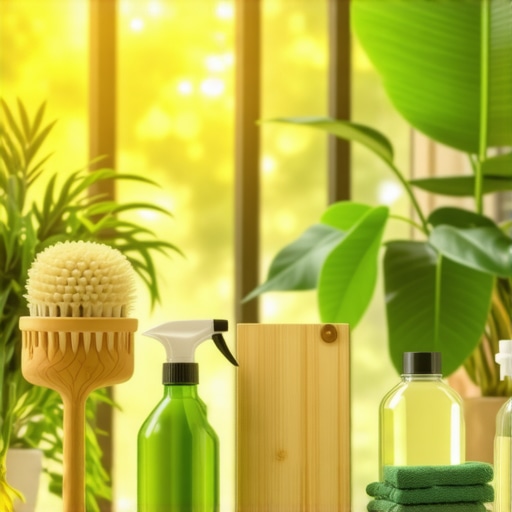My Journey to Eco-Friendly Cleaning: A Personal Reflection
Living in a bustling city, I often found myself overwhelmed by the harsh chemicals lurking in conventional cleaning products. One day, I decided to make a change—embracing eco-friendly house cleaning tips that promised not only a cleaner home but a healthier planet. This personal journey transformed my entire approach to cleaning, inspiring me to share my insights with fellow homeowners eager for sustainable solutions.
Why Choosing Eco-Friendly Cleaning Matters to Me
As I delved into the world of green cleaning, I learned about the significant impact our choices have on the environment and our health. According to the EPA, indoor air quality can be compromised by toxic chemicals, which many traditional cleaners contain. Switching to natural, biodegradable products gave me peace of mind, knowing I was reducing my carbon footprint and safeguarding my family’s health.
Simple Eco-Friendly House Cleaning Hacks That Work
One of the easiest tips I adopted was making my own cleaning solutions using ingredients like vinegar, baking soda, and lemon. These natural agents proved remarkably effective against dirt and grime. For example, a mix of vinegar and water works wonders on glass surfaces, while baking soda is fantastic for deodorizing carpets and drains. I also prioritized using reusable cloths and avoiding disposable wipes, which aligns perfectly with sustainable living principles.
How Do I Maintain a Balance Between Effectiveness and Sustainability?
I often wondered if eco-friendly methods could truly match the cleaning power of commercial products. The answer is a resounding yes, especially when I incorporate sustainable cleaning methods for a healthy living space, like regular vacuuming and proper ventilation. Plus, I learned to read labels carefully—looking for certifications such as USDA Organic or Ecolabel to ensure product integrity. For more comprehensive strategies, I consult trusted sources like this guide.
What are some challenges in maintaining eco-friendly cleaning routines?
Initially, I faced hurdles like higher costs and limited product availability. However, I found that investing in reusable tools and making DIY cleaners offered long-term savings and satisfaction. Sharing my experiences and tips in online communities has also helped me stay motivated and inspired others to adopt greener practices.
If you’re curious about transforming your cleaning habits or need personalized advice, don’t hesitate to reach out here. I love exchanging ideas and learning from fellow eco-conscious homeowners!
Unlocking the Power of Natural Cleaning Agents for a Greener Home
Transitioning to natural cleaning agents not only reduces your exposure to harmful chemicals but also enhances your overall eco-friendly strategy. Ingredients like vinegar, baking soda, lemon juice, and castile soap are true multitaskers that tackle dirt, grime, and odors effectively. For instance, a simple mixture of vinegar and water can be used to clean windows and mirrors, providing a streak-free shine without synthetic additives. Baking soda acts as a gentle abrasive, ideal for scrubbing sinks or deodorizing trash bins. Incorporating these solutions into your routine minimizes waste and supports sustainable living principles.
Integrating Eco-Conscious Technologies and Tools
Beyond natural ingredients, adopting eco-conscious cleaning tools amplifies your green efforts. Microfiber cloths, for example, are reusable, highly effective at trapping dust and dirt, and require less chemical reliance. High-efficiency vacuum cleaners with HEPA filters improve indoor air quality by capturing fine particles, benefiting allergy sufferers and reducing airborne pollutants. Additionally, investing in energy-efficient appliances and LED lighting complements your cleaning practices, creating a holistic approach to sustainability. For more innovative ideas on eco-friendly house cleaning hacks, visit this resource.

Image illustrating eco-friendly cleaning tools and natural ingredients, emphasizing sustainability and effectiveness.
Addressing the Nuances: Balancing Cost, Convenience, and Effectiveness
While natural cleaning methods are appealing, they can sometimes pose challenges related to cost, availability, and time investment. For instance, sourcing organic-certified ingredients or specialized tools may require additional effort or expense. However, making your own cleaners from bulk ingredients reduces long-term costs and minimizes packaging waste. Moreover, establishing a consistent routine—such as weekly deep cleans paired with daily quick wipe-downs—helps maintain cleanliness without sacrificing sustainability. Remember, the key lies in strategic planning and informed choices to ensure your eco-friendly practices are practical and sustainable over time. To explore more sustainable cleaning techniques, check out this guide.
How can I customize eco-friendly cleaning routines to fit my unique household needs?
Customizing your cleaning routine involves assessing your household’s specific requirements—such as pet dander, allergies, or high-traffic areas—and selecting appropriate natural solutions and tools. For example, incorporating allergen-reducing HEPA filters or using hypoallergenic, eco-certified products can make a significant difference. Additionally, scheduling deep cleaning sessions during low-energy periods ensures efficiency while conserving resources. Experimenting with different DIY recipes and tools helps identify what works best for your space, making your routines both effective and sustainable. If you’re interested in tailored advice, consider reaching out through our contact page for personalized tips and support.
Unveiling the Hidden Nuances of Eco-Friendly House Cleaning
As I immersed myself deeper into sustainable cleaning practices, I discovered that the journey is far more intricate than simply swapping chemical-laden products for natural alternatives. One of the most profound realizations was understanding the lifecycle of the ingredients we rely on. For example, vinegar, while seemingly benign, has a production footprint that varies depending on its source—organic, locally produced vinegar often has a smaller environmental impact compared to mass-produced commercial options. This insight pushed me to be more conscious about sourcing ingredients, encouraging me to explore local farmers’ markets and organic co-ops for the freshest, most sustainable options.
The Power of Microbiomes: Rethinking Cleanliness and Balance
Another layer of complexity I encountered was the idea of microbiomes—the diverse communities of beneficial microbes that naturally inhabit our homes. Traditional cleaning often aims to eradicate all germs, but recent studies suggest that maintaining a balanced microbiome can actually promote health and reduce allergies. I started using probiotic sprays and gentle cleaning agents that support these beneficial microbes, transforming my approach from total sterilization to fostering a healthy microbial environment. This subtle shift has made my home feel more vibrant and alive, aligning with my eco-conscious values.
How Do I Address the Challenge of Greenwashing?
One of the most frustrating hurdles has been navigating the sea of greenwashing—when products claim to be eco-friendly but fall short. According to the EPA, certifications like USDA Organic, Ecolabel, or Green Seal are vital markers of genuine sustainability. I’ve learned to scrutinize labels carefully, cross-referencing claims with reputable certification bodies. This vigilance ensures that my efforts genuinely contribute to environmental preservation rather than just appearing to do so. Sharing this knowledge within my community has helped others avoid deceptive products and make informed choices, amplifying the collective impact.
What Advanced Strategies Can Elevate My Eco-Friendly Routine Further?
Beyond basic ingredients and tools, integrating advanced, eco-conscious technologies can significantly elevate my cleaning routine. For instance, installing UV sterilization systems in my vacuum cleaner helps eliminate bacteria without chemicals, while smart sensors can optimize water and energy use during cleaning tasks. Additionally, adopting a minimalist approach—focusing on multi-purpose tools and reducing clutter—minimizes waste and simplifies maintenance. These strategies, while initially requiring some investment, pay off by creating a more efficient, sustainable cleaning ecosystem. If you’re interested in exploring cutting-edge eco-friendly solutions, I recommend checking out this resource.
As I continue refining my practices, I invite you to share your experiences or ask questions. Perhaps you’ve discovered a unique method or encountered a challenge worth discussing. Together, we can build a community that champions sustainable living, one mindful cleaning habit at a time.
Balancing Cost, Effectiveness, and Sustainability in Practice
Achieving the perfect balance among cost, convenience, and efficacy remains a personal challenge. I’ve found that setting realistic expectations and prioritizing high-impact changes—like switching to reusable cloths and making DIY cleaners—can make a tangible difference without overwhelming your budget. For example, purchasing bulk organic baking soda or vinegar reduces long-term costs and packaging waste, aligning with my eco values. Moreover, establishing a routine—such as weekly deep cleans paired with daily quick wipes—helps maintain cleanliness sustainably. This approach ensures I stay committed without sacrificing effectiveness or breaking the bank. For more tips on customizing your routine, visit this guide.
How Can I Personalize My Eco-Friendly Cleaning Routine for Unique Household Needs?
Personalization is key to ensuring your cleaning routine fits seamlessly into your life. Consider factors like pets, allergies, and the specific surfaces in your home. For instance, using hypoallergenic, eco-certified products in pet areas or high-traffic zones can make a real difference. Incorporating tools like microfiber mops for hardwood floors or eco-friendly steam cleaners can also cater to your unique requirements. Experimenting with different DIY recipes and tools helps identify what works best for your household, making your routine both sustainable and effective. If you’d like tailored advice, feel free to reach out through our contact page.
Harnessing the Power of Beneficial Microbial Flora for a Balanced Home Environment
One of the most transformative insights I’ve gained in my eco-cleaning journey is the role of beneficial microbiomes within our living spaces. Unlike traditional methods that seek to eliminate all microbes, I discovered that fostering a diverse microbial ecosystem can promote health and resilience. Using probiotic sprays and natural enzymatic cleaners, I support these beneficial microbes, creating a home environment that is not only clean but also microbiologically balanced. This approach reduces reliance on harsh disinfectants and aligns with a deeper understanding of ecological harmony, as emphasized by recent microbiome research in indoor environments (Nature Microbiology).
Integrating Smart, Eco-Conscious Technologies for Enhanced Sustainability
Advanced technology plays a crucial role in elevating eco-friendly cleaning routines. Installing UV sterilization modules in vacuum systems, utilizing smart sensors to optimize water and energy use, and employing robotic cleaners designed for minimal environmental impact are just a few innovations I’ve integrated into my home. These tools not only reduce resource consumption but also improve cleaning efficacy without chemical dependence. The confluence of technology and sustainability is exemplified by products like energy-efficient steam cleaners and intelligent air purifiers, which contribute to a healthier indoor atmosphere while respecting eco principles. For those interested in the latest innovations, I recommend exploring this comprehensive resource.
How Do I Navigate the Complexities of Certification and Avoid Greenwashing?
In my pursuit of authentic sustainability, I’ve become meticulous about verifying product claims. Greenwashing remains a significant challenge, often misleading consumers into believing products are eco-friendly when they are not. I rely heavily on reputable certifications such as USDA Organic, Ecolabel, and Green Seal, cross-referencing claims with official databases. This diligence ensures my choices genuinely contribute to environmental preservation. Sharing my knowledge about certification transparency has empowered my community to make more informed decisions, fostering collective responsibility and trust. To deepen your understanding, consider reviewing the detailed criteria set by these certifying bodies, which I discuss in my privacy policy.
What Cutting-Edge Strategies Can Further Optimize My Eco-Cleaning Routine?
Beyond basic principles, integrating advanced strategies such as the use of ozone generators for air purification, biodegradable packaging for cleaning supplies, and rainwater harvesting for cleaning water needs can exponentially increase sustainability. Additionally, adopting a minimalist cleaning arsenal—focusing on multi-purpose tools and reducing clutter—minimizes waste and simplifies maintenance. These practices, while requiring initial investment and planning, create a resilient, eco-efficient ecosystem that supports long-term health and environmental goals. For more detailed insights, I invite you to explore these advanced solutions.

Illustration of smart eco-friendly cleaning devices and sustainable tools, emphasizing innovation and environmental harmony.
Personalizing Your Eco-Friendly Routine to Match Unique Household Dynamics
Effective sustainability is deeply personal and requires tailoring routines to your household’s specific needs. For pet owners, hypoallergenic and non-toxic solutions are paramount. For allergy sufferers, HEPA filters combined with natural antimicrobial sprays can drastically improve indoor air quality. For high-traffic areas, incorporating steam cleaning and microfiber dusters ensures thorough yet gentle maintenance. I’ve found that regularly updating my routine based on seasonal changes, household occupancy, and emerging eco-technologies keeps my practices both practical and progressive. To craft your own personalized plan, I suggest consulting specialized guides or reaching out through this contact page for tailored advice.
Things I Wish I Knew Earlier (or You Might Find Surprising)
The Lifecycle of Ingredients Matters
When I first started switching to natural cleaners, I assumed that all vinegar and baking soda were equally eco-friendly. But over time, I learned that the production process and sourcing have a significant impact. Organic, locally sourced ingredients tend to have a smaller environmental footprint, which made me more conscious about where I buy my supplies and motivated me to support local farmers’ markets.
Microbiomes Are Your Friends
Initially, I thought total sterilization was the goal, but I discovered that fostering beneficial microbes actually supports a healthier home environment. Using probiotic sprays and enzymatic cleaners helped me shift from trying to eliminate every germ to maintaining a balanced microbiome, which feels more sustainable and natural.
Certifications Are Worth Checking
Not all products labeled as eco-friendly are created equal. I realized the importance of verifying certifications like USDA Organic or Green Seal. This extra step ensures that I’m genuinely supporting products that meet rigorous environmental standards, which I now recommend to friends who want to avoid greenwashing.
The Power of Multi-Purpose Tools
Investing in versatile, eco-friendly tools like microfiber cloths and steam cleaners has saved me time, money, and waste. These tools reduce the need for multiple specialized products and make it easier to maintain an eco-conscious routine effortlessly.
Advanced Eco-Tech Can Make a Difference
From UV sterilizers to smart sensors, integrating innovative technologies has elevated my cleaning game. These devices help me conserve resources while maintaining a deep clean, proving that sustainability is also about smart choices and embracing new solutions.
Resources I’ve Come to Trust Over Time
- EPA Indoor Air Quality: Offers reliable information on indoor pollution and safe cleaning practices. I refer to this often for health-conscious guidance.
- Green Seal Certification: An independent organization that certifies truly eco-friendly products. It’s my go-to for trustworthy labels.
- Nature Microbiology Journal: Provides cutting-edge research on microbiomes in indoor environments, expanding my understanding of microbial balance.
- Local Organic Co-ops: Supporting local sources has helped me access high-quality, sustainable ingredients and reduce my carbon footprint.
Parting Thoughts from My Perspective
Embracing eco-friendly house cleaning is a journey filled with discoveries, challenges, and rewarding moments. The most valuable insight I’ve gained is that true sustainability involves understanding the full lifecycle of our products, nurturing beneficial microbes, and staying open to innovative technologies. Every small change counts—whether it’s verifying labels, using multi-purpose tools, or supporting local sources. If this resonates with you, I’d love to hear your thoughts or experiences—feel free to share or reach out through this contact page. Together, we can make our homes healthier and our planet happier.”},

